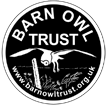Barn Owl hunting and feeding
What do Barn Owls eat?
In England, Scotland, and Wales, Barn Owl diet consists mainly of small mammals, particularly:
- Field Voles (45% of total British Barn Owl diet)
- Common Shrews (20%)
- Wood Mice (15%)
- House Mice, Brown Rats, Bank Voles and Pygmy Shrews are also taken
Mammal Society data has also shown that it’s rare for Barn Owls (in the UK) to take amphibians, invertebrates, birds and bats, although occasional cases have been recorded.
Barn Owls eat entire prey items but cannot digest fur or bone. This is regurgitated in the form of a pellet. You can see one of our webcam Barn Owls ‘casting’ a pellet, then eating, stretching, and defecating, in the video.
A Barn Owl will typically eat 3-4 prey items a night. During the breeding season, a pair of Barn Owls will (ideally) find this amount for each owlet as well. This works out to almost 4,000 prey items a year to feed a pair and their offspring! Barn Owl hunting success varies. Sometimes they are unable to hunt successfully due to unfavourable weather conditions, such as heavy rain, strong wind or deep snow, or if prey is scarce.
Where do Barn Owls hunt?
Barn Owls hunt where prey is most abundant. Rough grassland provides small mammals with plenty of cover which allows their numbers to really build up!
Field Voles create burrows through the thick litter layer at the base of rough grassland and emerge through little holes to graze on the surface. Vole holes are easiest to spot between November and March.
During the summer, crops and hay meadows can also be good hunting grounds, and in bad weather Barn Owls will often hunt in and around farm buildings.
In Ireland, where Field Vole and Common Shrew are absent, Barn Owls are more dependent on mice. They often hunt along hedgerows as shown in the GPS tracking video from Birdwatch Ireland. However, in Britain, permanent rough grassland is by far the best habitat.
Watch the video to see why it’s so good for Barn Owls and see how to create it.
When and how do Barn Owls hunt?
Barn Owls have excellent adaptations for successful hunting and learn to do so almost entirely by their own instincts when they are 8-14 weeks old. They are generally most active at dusk and dawn, typically leaving their roost site and ‘commuting’ across unsuitable habitat to reach a favoured hunting area, such as a patch of rough grassland. See pictures of Barn Owls hunting at dusk and dawn. Relying mostly on sound to locate prey, they fly low (up to about 3 metres) and slowly, back and forth across suitable habitat until they hear a small mammal below. Before pouncing, they will often hover, waiting for the perfect moment, although sometimes a Barn Owl will fly along and then suddenly drop straight into the grass.
When a Barn Owl strikes, it starts with a head-first dive before pulling its head back and replacing the facial disk with out-stretched talons – ready to grab the prey. This is shown brilliantly in this BBC slow motion video of a Barn Owl pouncing into long grass.
In winter, Barn Owls are more likely to spend time hunting from posts or other suitable perching places. This saves energy, both by reducing activity and by minimising the significant heat loss that can occur when flying in cold air.
The Barn Owl’s ability to hunt almost silently comes at a cost. Their specially adapted feathers are not particularly waterproof and they are unable to store a lot of body fat. This means they are unable to hunt in heavy rain and are particularly prone to starvation during prolonged periods of severe weather and/or prey shortage.
A Barn Owl’s hearing is one of the most sensitive of any animal ever tested! Find out more about…
Find out how the Barn Owl’s sedentary lifestyle helps it hunt and feed…
Sadly, most wild Barn Owls don’t live very long. Find out more about…
Searching for Shrews
Did you know? Barn Owls can catch and eat the Greater White-toothed Shrew, which is a non-native invasive species in the UK. Find out about our Searching for Shrews partnership with the Mammal Society, and become involved in a citizen science project!





